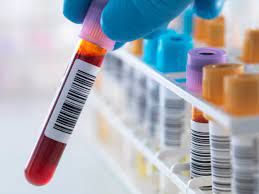This is how the AI article summary could look. Lorem ipsum dolor sit amet, consectetur adipiscing elit, sed do eiusmod tempor incididunt ut labore et dolore magna aliqua. Ut enim ad minim veniam, quis nostrud exercitation ullamco laboris nisi ut aliquip ex ea commodo consequat.
A normal full blood count (FBC)

A full blood count has three main components:
- Haemoglobin (‘Hb’)
- 130-170 g/L for men
- 110-150 g/L for women
- White cell count (WC) = 4-11 x10^9/L (million per litre)
- Platelet count = 150-400 x10^9/L (million per litre).
Here is more information on these three components.
1. Haemoglobin (‘Hb’)
- For adults, normal Hb levels are:
- 130–170 g/L for men
- 110–150 g/L for women
- Note. So a Hb of 120 g/L is anaemia for a man, but not a woman
- The Hb reflects the number of red cells (which carry oxygen) in the blood – a higher number means more red cells
- A low haemoglobin means you have a low number of red cells and is called anaemia
- A high haemoglobin means a high number of red cells and is called polycythaemia.
2. White cell count (WC)
- For adults, a normal white count is 4-11 x10^9/L (million per litre)
- These cells fight infection (and cancer and foreign bodies inside you)
- If you have too many of them (called leucocytosis), it could be a sign of inflammation, infection, cancer or another medical condition
- If it’s low (called leucopenia), you could be at a higher risk for infection. A medication, a viral infection, or a bone marrow disease could also cause a low count.
Note. Black people often have a slightly low WC (3.5-3.9). This is not a disease.
3. Platelet count
- For adults, a normal platelet count is 150-400 x10^9/L (million per litre)
- These cells clot the blood
- A low number is called thrombocytopenia. A high number is called thrombocythaemia.
Normal ranges of other components of an adult FBC
- Mean cell volume (MCV; size of a typical red cell) = 80-95 fL. <80 is microcytic, >95 is macrocytic
- Mean cell haemoglobin (MCH; amount of Hb inside a typical red cell) = 27-32 pg
- Differential white count. There are five types of white blood cells: basophils, eosinophils, lymphocytes, monocytes, and neutrophils. This test shows how many of each kind you have:
- Neutrophils = 1.8-7.5 x10^9/L
- Lymphocytes = 1.0-4.0 x10^9/L
- Monocytes = 0.2-0.8 x10^9/L
- Eosinophils = 0.1-0.4 x10^9/L
- Basophils = 0.02-0.10 x10^9/L.
Note. Different laboratories/hospitals will have slightly different normal ranges.
